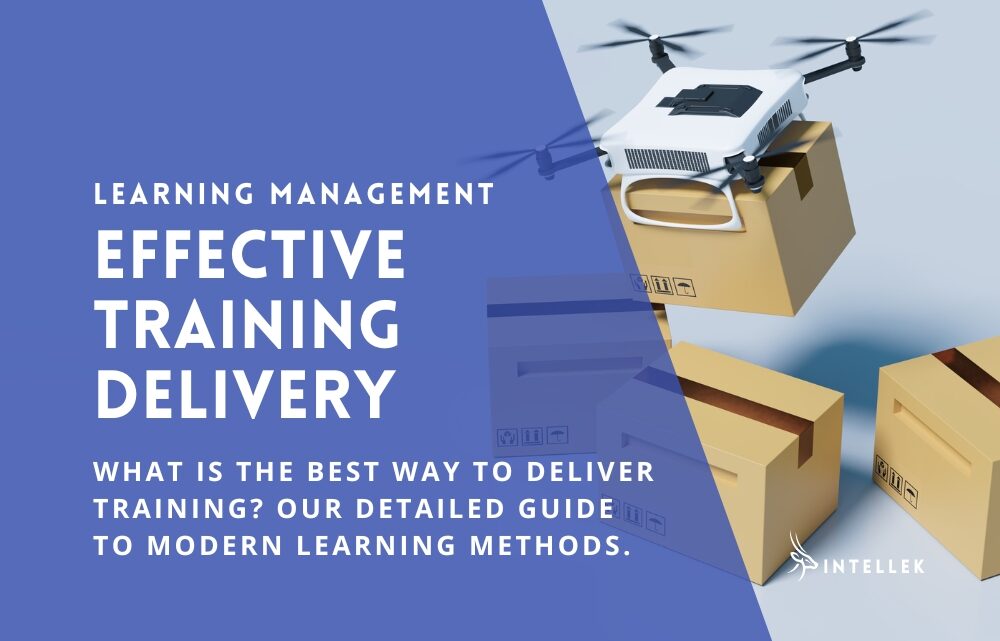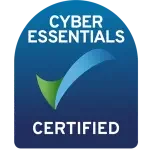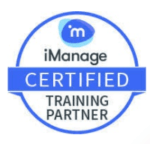
Effective training delivery is the cornerstone of an organization’s success, fostering employee growth, productivity, and overall performance. In this rapidly evolving digital era, organizations must adopt modern learning approaches that cater to the diverse needs of their workforce.
This article looks at various cutting-edge training methods that can create a positive and engaging learning environment. From eLearning content to gamification, and from mobile learning to accessible programs, we explore how organizations can deliver training that ensures lasting impact and aligns with strategic objectives.
IN THIS ARTICLE...
Clear Communication in Training Delivery
Communicating training goals and objectives effectively is vital for creating a roadmap for learners. Effective training delivery goes beyond providing information; it requires fostering a learning-centric culture within an organization. One of the foundational pillars of such a culture is clear and effective communication of the purpose of training.
When employees understand the purpose and significance of their training, they are more likely to approach it with enthusiasm and commitment. In this section, we explore the pivotal role of clear communication in cultivating a learning-centric environment and maximizing the impact of training initiatives.
Clear communication empowers learners by providing a sense of direction, making them more invested in the training process. Clear and effective communication of training goals and objectives lays the foundation for a learning-centric culture within an organization.
By setting transparent learning outcomes, communicating training expectations, establishing a safe learning environment, providing timely feedback, and aligning training with organizational values, organizations can create an environment where employees are empowered to embrace learning as a continuous and fulfilling process. This fosters a motivated and skilled workforce that is ready to adapt to challenges and drive the organization’s success forward.
Setting Transparent Learning Outcomes
At the outset of any training program, it is crucial to communicate clear and transparent learning outcomes to the participants. These outcomes outline what employees can expect to achieve by the end of the training and how the newly acquired knowledge and skills will contribute to their personal and professional growth.
Transparent learning outcomes set the stage for a purposeful learning experience, as employees understand the relevance of the training to their roles and career progression.
Communicating Training Expectations
Alongside learning outcomes, communicating training expectations is equally important. This involves setting clear expectations regarding attendance, participation, and any prerequisites for the training. When employees are aware of what is expected of them, they can prepare adequately and make the most of the learning opportunity.
Additionally, conveying the format of the training (e.g. in-person workshops, online courses, or blended learning) helps participants mentally prepare for the learning experience ahead.
Establish a Safe Learning Environment
Clear communication plays a vital role in creating a safe and supportive learning environment. Employees should feel comfortable asking questions, seeking clarification, and sharing their thoughts during the training.
A culture that encourages open dialogue and fosters a growth mindset allows learners to embrace challenges and learn from their mistakes without fear of judgment. Trainers and instructors play a critical role in facilitating this environment by actively encouraging interaction and demonstrating approachability.
Provide Timely and Relevant Feedback
Feedback is a crucial aspect of the learning process. Regular and constructive feedback helps learners understand their progress, identify areas for improvement, and build on their strengths.
Both trainers and learners should be encouraged to provide feedback on the training content, delivery, and overall experience. Organizations can also leverage technology to implement feedback mechanisms, such as surveys and evaluations, to gather valuable insights for continuous improvement.
Align Training with Organizational Values
For training to have a lasting impact, it must align with the organization’s core values and strategic goals. When employees see a direct connection between their training and the overall vision of the organization, they are more likely to be motivated and committed to their learning journey.
Effective communication should emphasize how the skills gained through training contribute to the success of the company and align with the broader mission.
Embrace Diverse Training Delivery Methods
Every individual learns differently, and organizations must embrace various delivery methods to cater to diverse learning styles. The significance of embracing in-person instruction, online courses, and self-paced learning materials should not be underestimated, this allows organizations to create a versatile training system.
In-person instruction allows for face-to-face interaction, immediate feedback, and collaborative learning, while online courses offer convenience and accessibility, enabling learners to access content at their own pace. Self-paced learning materials provide flexibility and personalized learning experiences.
By employing a blended learning approach, organizations can create a comprehensive training ecosystem that empowers employees to take charge of their learning journey, leading to higher engagement and a skilled workforce.
20 Modern Delivery Methods for Training
There are many ways to deliver training these days. Using in-person instructor-led training, right through to virtual simulations. Take a look at the following list to see some of the options for delivering training:
- Blended learning – Combining multiple training delivery methods, often online self-paced learning combined with live instructor-led training.
- Mentoring and coaching – One-on-one training and support from an experienced mentor/coach to a less experienced learner. Focuses on skills growth.
- Job shadowing – A training method where a trainee observes and works alongside someone experienced at a job to learn skills through observation and imitation in a work environment.
- Instructor Led Training (ILT) – Any training that has an instructor directly teaching learners the skills/knowledge needed. Could be in-person or virtual.
- ILT – Virtual classrooms – Instructor-led training conducted live in an online virtual classroom setting. Learners can remote in through video conferencing software.
- ILT – Classroom training – In-person instruction with a live instructor and learners physically present in the same location.
- Brown bag lunch – Informal training sessions held during lunch breaks. Learners bring their own lunch and participation is voluntary.
- Virtual training – Training conducted in an online setting with remote instructors and learners. Includes methods like virtual classrooms.
- Augmented Reality (AR) Training – Overlays computer-generated graphics and information onto the real-world environment in real-time to enhance learning with interactive digital elements. Allows simulated practice of skills. Often uses AR headsets or devices.
- Virtual Reality (VR) Training – Immerses learners into simulated 3D environments completely through VR headsets. Used for experiential learning of new skills through practice in realistic simulated settings. Blocks outside distractions during training.
- Asynchronous learning – Self-paced online training where learners complete courses on their own schedule. Does not require real-time interaction.
- eLearning – Training delivered through digital mediums, often self-paced courses taken online. Covers methods like asynchronous learning.
- Simulation training – Training in an artificial simulation of a work environment used to mimic real situations and develop skills through practice and feedback. Could use specialized equipment.
- Microlearning – Training content/courses broken down into short burst lessons as short as 1-5 minutes long. Focused on very specific skills.
- Podcasts – Audio training series delivered via digital audio files where learners listen and learn passively from a recording.
- Video training – Delivery of training materials through instructional videos that demonstrate processes and skills visually. Learners watch on their own schedule.
- Mobile learning – Training delivered to learners on mobile devices like smartphones and tablets, enabling learning on the go.
- Email courses – Training sent directly to learners’ email inboxes broken into lessons or units over time. Self-directed and on learner’s schedule.
- Learning portals – Websites or apps that curate multiple training resources, courses, tools, and materials into a central training platform or portal for ease of learner access.
- Adaptive learning – Computer-based training that adapts and personalizes content/activities based on an individual learner’s needs and responses in real time.
Facilitator’s Role in Engaging Learners
The role of trainers or instructors goes beyond dispensing information; they are catalysts for engagement and empowerment. Trainers and instructors play a pivotal role in shaping the learning experience for participants. Beyond being mere knowledge transmitters, they act as facilitators who guide learners on their educational journey.
By employing various techniques and strategies, they can enhance engagement, promote active participation, and foster a positive and supportive learning environment. In this section, we explore the multifaceted role of trainers and instructors in effective training delivery.
The trainer’s role in delivering effective training extends far beyond relaying information. By employing hands-on activities, providing ongoing support, and tailoring training to individual needs, trainers can create a stimulating and engaging learning environment.
Through these efforts, organizations can maximize the impact of their training initiatives, nurturing a skilled and motivated workforce that is ready to embrace new challenges and drive the company’s success.
Hands-On Activities for Enhanced Retention
Passive learning can limit knowledge retention, while interactive and hands-on activities can boost engagement and knowledge transfer.
One of the key responsibilities of trainers is to create interactive and hands-on activities that stimulate participants’ minds. By incorporating practical exercises, simulations, and real-world projects into the training curriculum, trainers can reinforce learning and enhance retention.
Hands-on activities solidify theoretical concepts and provide a safe space for learners to apply their knowledge, experiment, and learn from their mistakes.
Incorporating group activities, role-plays, and case studies can encourage collaboration and teamwork, fostering a sense of camaraderie among learners. Furthermore, by tailoring these activities to address specific challenges that employees may encounter, trainers can ensure that the training is relevant and directly applicable to their day-to-day responsibilities.
Continuous Support and Follow-Up
Training delivery doesn’t end with a single session; continuous support and follow-up are critical for ensuring knowledge application in the workplace.
Training is not a one-and-done event; it is a continuous process that requires ongoing support and follow-up. Trainers must provide post-training reinforcement to help participants retain and apply what they have learned in their daily tasks. This can be achieved through follow-up sessions, one-on-one coaching, or mentoring programs.
By offering continuous support, trainers can address any questions, concerns, or roadblocks that learners may face as they implement their newfound knowledge in the workplace. This personalized attention demonstrates the organization’s commitment to employee growth and development, ultimately fostering a sense of loyalty and investment in the company’s success.
Tailor Training to Individual Needs
Generic training programs seldom yield optimal results. Recognizing that every learner is unique, trainers must adapt their approaches to cater to different learning styles and preferences. Using various instructional methods, such as visual, auditory, and kinesthetic techniques, ensures that the training resonates with all participants.
Before the training commences, trainers should assess the participants’ skill levels, knowledge gaps, and learning objectives. This information enables them to design customized learning paths that address specific needs and promote a sense of ownership over the learning process.
Moreover, embracing adaptive learning technology can further personalize the training experience. By leveraging AI-driven platforms, for example, trainers can dynamically adjust the content based on participants’ progress and performance, optimizing knowledge retention and skill development.
Leverage Technology and Multimedia Tools
Technology has revolutionized the training landscape, and incorporating multimedia tools can significantly enhance the learning experience. Technology plays a transformative role in the training landscape, enabling organizations to create dynamic and interactive learning experiences.
By harnessing the power of learning technology and multimedia tools, training can be made more engaging, personalized, and effective. Let’s explore the various ways in which technology can revolutionize training, with a specific focus on integrating training into the workflow for maximum impact.
Leveraging technology and multimedia tools in training is pivotal for organizations looking to optimize their learning initiatives. By incorporating multimedia learning, VR and AR applications, and AI-powered adaptive learning, companies can create immersive and personalized experiences that enhance knowledge retention and skill development.
Moreover, by embracing Just-In-Time training strategies and integrating training into the workflow, organizations can ensure that learning is continuous, contextualized, and directly applicable to employees’ daily tasks. Embracing these modern training methods empowers organizations to unlock the full potential of their workforce and drive sustainable growth and success in today’s dynamic business landscape.
Training in the Workflow
Training in the Workflow, a strategy built on micro-learning, delivers bite-sized, task-specific content to employees when they need it most. This is often facilitated by using a Digital Adoption Platform, teamed with a Learning Management System alongside internal and external training material.
Just-in-time learning ensures quick access to relevant knowledge, enhancing productivity and skill development. Personalized and seamlessly integrated with existing workflows, this approach fosters a continuous learning culture and drives organizational success through efficient and effective training.
Meet the Demand for Accessible Learning Programs
As workplaces become more diverse, accessibility becomes a crucial consideration. In today’s diverse and inclusive workplaces, accessibility is no longer an option; it’s a fundamental necessity. Ensuring that training programs are accessible to all employees, regardless of their abilities or backgrounds, is paramount to creating a positive and equitable learning environment.
Meeting Section 508 compliance standards is not only a legal requirement for many organizations but also a moral imperative to foster an inclusive workplace.
Addressing accessibility concerns in training programs goes beyond just fulfilling regulatory requirements. It shows a commitment to equal opportunities for professional development and growth. When employees feel that their unique needs are recognized and accommodated, they are more likely to be engaged and motivated in their learning journey.
Investing in accessible technology and authoring tools that comply with accessibility standards is essential. These tools allow content creators and trainers to design materials and deliver training with accessibility in mind from the outset, reducing the need for retrofitting after content has been created.
Navigating the Mobile Workforce Challenge
With the rise of remote work and the increasing mobility of employees, traditional training approaches may no longer suffice. To meet the demands of a mobile workforce, organizations should implement mobile learning strategies that support effective training delivery by enabling employees to access training materials and resources conveniently, regardless of their location or time zone.
- Responsive Design: Developing training materials with a responsive design ensures that they adapt seamlessly to various devices, such as smartphones, tablets, and laptops. This approach enables employees to access training content on their preferred devices, promoting a sense of autonomy in their learning journey.
- Micro-Learning Modules: Short, bite-sized training modules are ideal for employees on the go. Micro-learning allows individuals to engage with the training material during short breaks, commutes, or other pockets of free time, maximizing their learning opportunities without disrupting their work schedules.
- Mobile Apps and Platforms: Investing in mobile learning apps or platforms can be transformative for a mobile workforce. These applications offer a user-friendly interface, intuitive navigation, and offline access to content, ensuring uninterrupted learning, even in areas with limited internet connectivity.
- Virtual Collaboration Tools: Facilitating virtual collaboration and communication among employees fosters a sense of belonging and community within the mobile workforce. Integrating video conferencing, instant messaging, and discussion forums can provide a platform for shared learning experiences and peer support.
- Gamified Mobile Learning: Leveraging gamification in mobile learning can boost engagement and motivation. By incorporating elements such as badges, leaderboards, and rewards, organizations can inspire healthy competition and drive learning uptake among remote or mobile employees.
By implementing mobile learning strategies and ensuring accessibility, organizations can empower their mobile workforce with continuous learning opportunities, aligning training delivery efforts with the evolving needs of a dynamic and geographically dispersed workforce.
This adaptability not only enhances individual employee growth but also contributes to the organization’s overall success in an ever-changing business landscape.
The Power of Ongoing Evaluation and Feedback
Regular assessment and feedback are essential to measure the effectiveness of training initiatives and identify areas for improvement. Continuous assessment of key performance indicators and collection of comprehensive feedback allows organizations to gauge the impact of training initiatives objectively.
By identifying strengths and areas for improvement, organizations can adapt their training content to meet the changing needs of the workforce. This commitment to continuous improvement fosters a culture of learning and enhances employee engagement.
Linking training outcomes to organizational goals provides tangible evidence of the value of training investments and informs strategic decision-making.
Embracing ongoing evaluation and feedback nurtures a thriving learning culture, positioning organizations as leaders in their industries, ready to meet the challenges of an evolving workforce and marketplace.
Aligning Training with Organizational Goals
For training to be truly impactful, it must align with the broader strategic objectives of the organization and cater to the needs of key stakeholders. Training initiatives are most effective when they are thoughtfully aligned with the overarching strategic objectives of the organization.
By tailoring training programs to support these goals, organizations can ensure that their learning efforts contribute directly to the success of the business. Here, we explore the key steps of aligning training with organizational goals and how it can foster a culture of learning and growth within the workforce.
- Understanding Organizational Goals: Before embarking on any training endeavor, it is crucial to have a comprehensive understanding of the organization’s goals. This involves engaging with key stakeholders, such as senior management and department heads, to gain insights into the company’s long-term vision, mission, and specific targets.
- Identifying Skill and Knowledge Gaps: Once organizational goals are clear, the next step is identifying the skill and knowledge gaps that may hinder progress. Conducting a thorough training needs analysis enables HR and L&D teams to pinpoint areas where employee development is required to support the strategic vision.
- Defining Learning Objectives Aligned with Goals: To ensure alignment, learning objectives must be explicitly tied to the organizational goals. Each training program should have clearly defined outcomes that link the skills and knowledge acquired during training to specific business outcomes.
- Integration of Real-World Scenarios: To reinforce the alignment between training and organizational goals, incorporating real-world scenarios into the learning experience is essential. By using case studies and simulations that mirror actual workplace challenges, learners can grasp the practical applications of their training.
- Communication of Training Relevance: Transparent communication is key to helping employees understand the importance of their training in relation to organizational goals. Before training sessions, communicate the relevance and significance of the training program, highlighting how it contributes to the overall success of the organization.
- Creating a Culture of Learning and Growth: Aligning training with organizational goals goes beyond individual programs; it fosters a culture of continuous learning and growth within the organization. By consistently demonstrating the connection between training initiatives and business outcomes, employees are more likely to view learning as an integral part of their career development.
- Monitoring Progress and Evaluation: To ensure ongoing alignment, organizations must continuously monitor the progress of their training initiatives and evaluate their impact on achieving organizational goals. Regular assessment of training effectiveness allows for timely adjustments and improvements, ensuring that the learning experiences remain relevant and impactful.
Unleash Effective Training Delivery Today
Modern training methods are essential for fostering a motivated, skilled, and agile workforce. By combining learner-centric eLearning, gamification, diverse training delivery methods, and ongoing evaluation, organizations can create a culture of continuous learning and drive unprecedented success.
By prioritizing accessibility and adapting to the demands of a mobile workforce, companies can ensure that their training initiatives resonate with employees across the board. Embracing the power of technology and tailoring training experiences to individual needs will undoubtedly propel organizations toward sustainable growth and success.
Intellek (formerly TutorPro) is a founding member of the learning technology industry. With a presence in the USA, UK, Canada, and the EU – for over 30 years we have pioneered the development of cutting-edge eLearning software and online training solutions, with a large and diverse portfolio of international clientele.
Disclaimer: We use all the tools available including generative AI to create relevant and engaging content.






